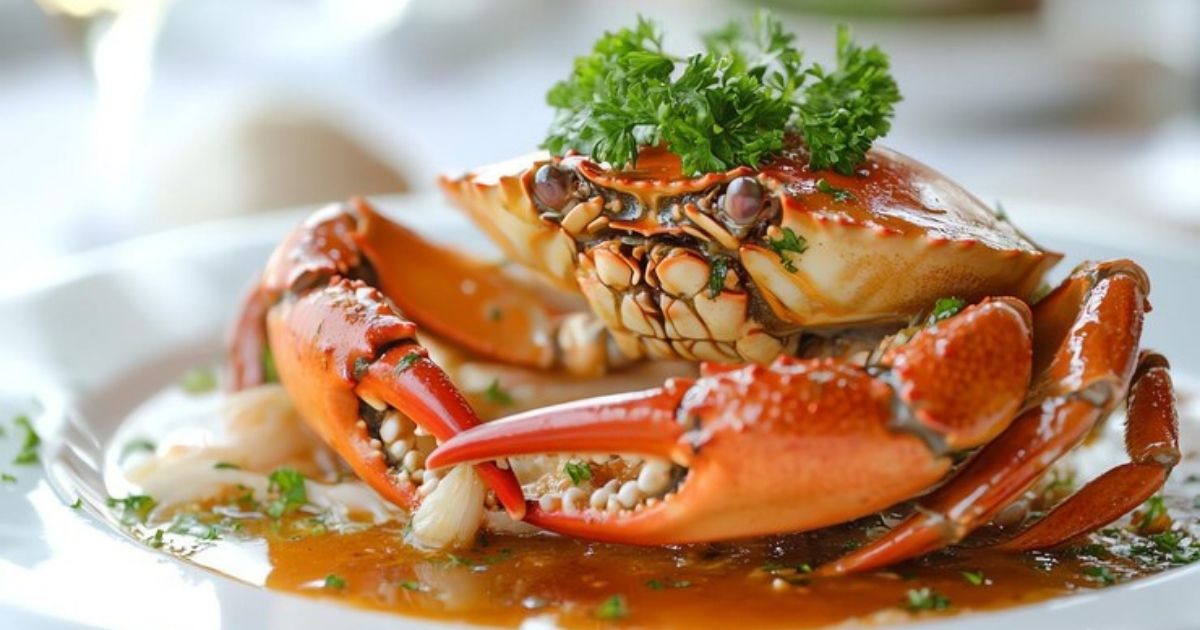Kanikama, often referred to as imitation crab, is a popular ingredient in many cuisines, particularly in Japanese dishes. Despite its name, Kanikama is not real crab meat but a processed seafood product made primarily from surimi, a paste made of white fish. Over the years, it has gained popularity for its taste, versatility, and affordability compared to real crab. This article will take a closer look at what it is, how it’s made, its health benefits, and how you can incorporate it into your meals.
What is Kanikama?
Kanikama, or imitation crab, is a processed seafood product designed to mimic the flavor and texture of real crab meat. It’s made from surimi, a paste created by grinding white fish, typically pollock or other similar fish, into a smooth, malleable substance. Flavorings, starches, and other ingredients are added to give it a taste and texture that closely resembles crab meat.
The Origin of Kanikama
It was invented in Japan in the 1970s as an affordable alternative to real crab, which was expensive and hard to come by. The name “Kanikama” combines the Japanese word “kani” (meaning crab) and “kamaboko,” a type of fish cake. Initially popular in Japan, It quickly spread across the globe due to its versatility and cost-effectiveness.
How is Kanikama Made?
The production process of Kanikama begins with creating surimi. Fish, typically Alaska pollock, is deboned, washed, and minced to create a paste. This paste is mixed with starch, flavor enhancers, sugar, egg whites, and sometimes crab extract to enhance its crab-like taste. The mixture is then shaped into strips or sticks, often dyed to resemble the reddish hue of real crab legs. Finally, it is cooked and packaged, ready to be sold in grocery stores.
The Taste and Texture of Kanikama
Kanikama is often praised for its subtle, sweet flavor and firm yet flaky texture, which is similar to real crab meat. While it doesn’t have the briny, rich taste of fresh crab, its mild flavor makes it suitable for a variety of dishes. Whether you’re using it in sushi, salads, or pasta, It absorbs seasonings well, adding a satisfying seafood taste without overpowering other ingredients.
Health Benefits of Kanikama
One of the key reasons for Kanikama’s popularity is its relatively low calorie and fat content compared to real crab. A serving of it typically contains fewer calories, making it a great option for those looking to reduce their caloric intake without sacrificing flavor. Additionally, it is a good source of protein, essential for maintaining muscle mass and supporting overall health.
Low in Fat and Calories
Kanikama is especially appealing to those on a diet, as it contains very little fat. A typical serving has about 80-100 calories and less than 1 gram of fat, making it an ideal choice for low-fat and low-calorie diets. This makes it an excellent ingredient for health-conscious individuals looking for a seafood alternative.
High in Protein
Despite being low in calories, It is rich in protein. Protein is essential for maintaining muscle mass, supporting immune function, and keeping you feeling full longer. For those looking for a lean source of protein, Kanikama is a convenient option.
Versatile in Cooking
One of Kanikama’s greatest strengths is its versatility in cooking. Its mild flavor means it pairs well with a wide variety of ingredients, from vegetables to pasta. You can find Kanikama in sushi rolls, crab salads, seafood dips, and even as a topping for pizzas. It can be served hot or cold, making it a flexible ingredient for various types of cuisine.
Kanikama in Sushi
Kanikama is perhaps best known for its use in sushi, especially in popular rolls like the California roll. In these dishes, It is often shredded and mixed with mayonnaise to create a creamy filling. Its soft texture and subtle flavor make it an ideal complement to the sticky rice and seaweed commonly found in sushi.
Salad Additions
If you’re looking for a quick and easy way to add a seafood element to your meals, It is a great option for salads. You can slice it into thin strips and toss it with greens, cucumbers, and a light vinaigrette for a refreshing and protein-packed meal. The sweetness of it pairs well with citrusy dressings and crunchy vegetables.
Dips and Spreads
Kanikama can also be used to make delicious seafood dips and spreads. You can blend it with cream cheese, herbs, and a touch of lemon juice for a flavorful dip that’s perfect for crackers or vegetables. This easy-to-make dip is great for entertaining or as a simple snack.
A Budget-Friendly Option
One of the main reasons it has become so widely used is its affordability. Real crab can be quite expensive, but It offers a similar taste and texture at a fraction of the cost. This makes it a great option for people who want to enjoy the flavor of crab without breaking the bank.
Kanikama and Food Allergies
Although Kanikama is made from fish, it’s important to note that it may contain other allergens, such as egg whites, wheat, or shellfish extracts, used for flavoring. If you have food allergies, always check the ingredient list carefully before consuming it .
Sustainability
Kanikama’s main ingredient, Alaska pollock, is one of the most sustainable seafood choices available. Pollock fisheries are managed under strict sustainability guidelines, making it a relatively eco-friendly seafood option. By choosing it over real crab, you’re not only saving money but also supporting sustainable fishing practices.
Storing and Using it
Kanikama is available in most grocery stores, typically in the refrigerated or frozen sections. Once opened, it should be kept in the refrigerator and used within a few days. You can enjoy it cold straight from the package or incorporate it into a cooked dish.
Conclusion
It may not be real crab, but it has earned its place in the culinary world thanks to its affordability, versatility, and taste. Whether you’re looking to add it to your sushi, salads, or dips, this imitation crab product is a great way to enjoy seafood flavor without the high cost. With its low calorie and high protein content, it’s also a healthier alternative to other seafood options. The next time you’re at the grocery store, consider picking up some Kanikama and experimenting with it in your kitchen!
FAQs
What is Kanikama made from?
It is made primarily from surimi, a paste created from white fish like pollock, mixed with starch, flavorings, and sometimes crab extract.
Is Kanikama healthy?
Yes, It is low in calories and fat but high in protein, making it a healthy alternative to real crab.
How should I store Kanikama?
Once opened, It should be kept in the refrigerator and consumed within a few days.
Can I eat Kanikama if I have a seafood allergy?
It may contain shellfish or other allergens, so it’s important to check the ingredient list if you have allergies.
Is Kanikama sustainable?
Yes, It’s main ingredient, Alaska pollock, is sourced from sustainable fisheries, making it an eco-friendly option.











